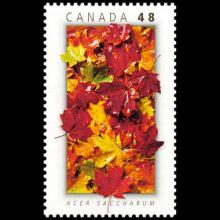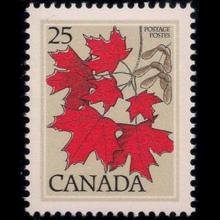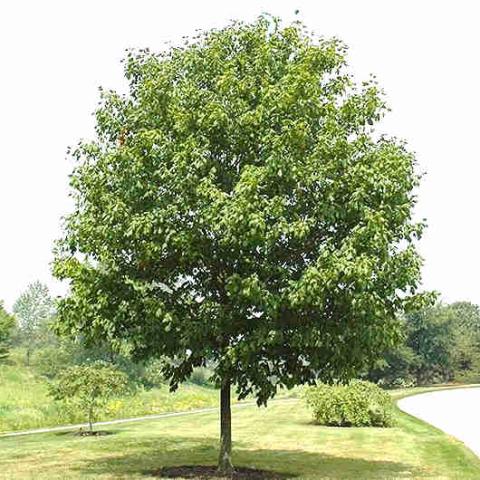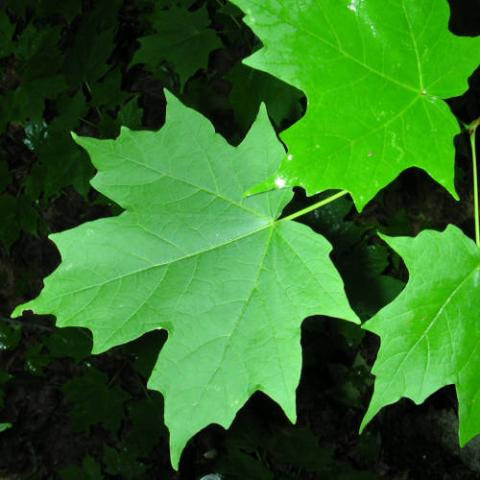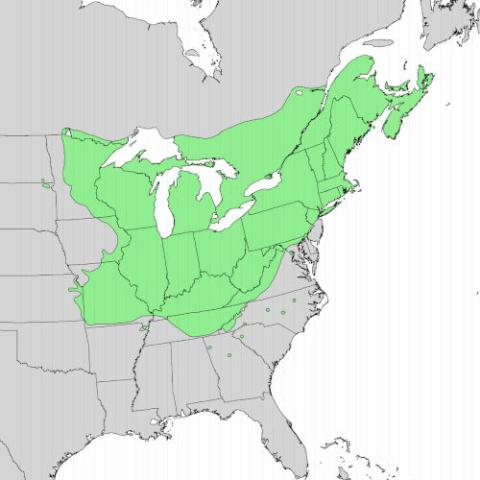NAME(S)
TAXONOMY
PLANTAE ID
THERAPEUTIC
Canada
Issued:
Stamp:
Acer saccharum
Canada
Issued:
Stamp:
Acer saccharum
Canada
Issued:
Stamp:
Acer saccharum
Canada
Issued:
Stamp:
Acer saccharum
Canada
Issued:
Stamp:
Acer saccharum
Canada
Issued:
Stamp:
Acer saccharum
Genus species (Plantae): Acer saccharum
Acer saccharum, the sugar maple, is a species of flowering plant in the soapberry and lychee family Sapindaceae. It is native to the hardwood forests of eastern Canada and eastern United States. Sugar maple is best known for being the primary source of maple syrup and for its brightly colored fall foliage. It may also be known as "rock maple", "sugar tree", "birds-eye maple", "sweet maple", "curly maple", or "hard maple", particularly when referring to the wood.
Description
Acer saccharum is a deciduous tree normally reaching heights of 25–35 m (80–115 ft), and exceptionally up to 45 m (150 ft). A 10-year-old tree is typically about 5 m (20 ft) tall. As with most trees, forest-grown sugar maples form a much taller trunk and narrower canopy than open-growth ones.
The leaves are deciduous, up to 20 cm (7.9 in) long and wide, palmate, with five lobes and borne in opposite pairs. The basal lobes are relatively small, while the upper lobes are larger and deeply notched. In contrast with the angular notching of the silver maple, however, the notches tend to be rounded at their interior. The fall color is often spectacular, ranging from bright yellow on some trees through orange to fluorescent red-orange on others. Sugar maples also have a tendency to color unevenly in fall. In some trees, all colors above can be seen at the same time. They also share a tendency with red maples for certain parts of a mature tree to change color weeks ahead of or behind the remainder of the tree. The leaf buds are pointy and brown-colored. The recent year's growth twigs are green, and turn dark brown.
The flowers are in panicles of five to ten together, yellow-green and without petals; flowering occurs in early spring after 30–55 growing degree days. The sugar maple will generally begin flowering when it is between 10 and 200 years old. The fruit is a pair of samaras (winged seeds). The seeds are globose, 7–10 mm (9⁄32–13⁄32 in) in diameter, the wing 2–3 cm (3⁄4–1+1⁄4 in) long. The seeds fall from the tree in autumn, where they must be exposed to 45 days of temperatures below 4 °C (39 °F) to break their coating down. Germination of A. saccharum is slow, not taking place until the following spring when the soil has warmed and all frost danger is past. It is closely related to the black maple, which is sometimes included in this species, but sometimes separated as Acer nigrum. The western American bigtooth maple (Acer grandidentatum) is also treated as a variety or subspecies of sugar maple by some botanists.
The sugar maple can be confused with the Norway maple, which is not native to America but is commonly planted in cities and suburbs, and they are not closely related within the genus. The sugar maple is most easily identified by clear sap in the leaf petiole (the Norway maple has white sap), brown, sharp-tipped buds (the Norway maple has blunt, green or reddish-purple buds), and shaggy bark on older trees (the Norway maple bark has small grooves). Also, the leaf lobes of the sugar maple have a more triangular shape, in contrast to the squarish lobes of the Norway maple.
Although many people think a red sugar maple leaf is featured on the flag of Canada, the official maple leaf does not belong to any particular maple species; although it perhaps most closely resembles a sugar maple leaf of all the maple species in Canada, the leaf on the flag was specially designed to be as identifiable as possible on a flag waving in the wind without regard to whether it resembled a particular species' foliage. a
Cultivation and uses
Maple syrup and other food use
The sugar maple is one of the most important Canadian trees, being, with the black maple, the major source of sap for making maple syrup. Other maple species can be used as a sap source for maple syrup, but some have lower sugar content and/or produce more cloudy syrup than these two. In maple syrup production from Acer saccharum, the sap is extracted from the trees using a tap placed into a hole drilled through the phloem, just inside the bark. The collected sap is then boiled. As the sap boils, the water evaporates and the syrup is left behind. Forty gallons of maple sap produces 1 gallon of syrup. In the southern part of their range, sugar maples produce little sap; syrup production is dependent on the tree growing in cooler climates.
The seeds can be soaked, and—with their wings removed—boiled, seasoned, and roasted to make them edible. The young leaves and inner bark can be eaten raw or cooked.
Timber
The sapwood can be white, and smaller logs may have a higher proportion of this desirable wood. Bowling alleys and bowling pins are both commonly manufactured from sugar maple. Trees with wavy woodgrain, which can occur in curly, quilted, and "birdseye maple" forms, are especially valued. Maple is also the wood used for basketball courts, including the floors used by the NBA, and it is a popular wood for baseball bats, along with white ash. In recent years, because white ash has become threatened by emerald ash borer, sugar maple wood has increasingly displaced it for baseball bat production. It is also widely used in the manufacture of musical instruments, such as the members of the violin family (sides and back), guitars (neck), grand pianos (rim), and drum shells. It is also often used in the manufacture of sporting goods.
Canadian maple, often referred to as "Canadian hardrock maple", is prized for pool cues, especially the shafts. Some production-line cues will use lower-quality maple wood with cosmetic issues, such as "sugar marks", which are most often light brown discolorations caused by sap in the wood. The best shaft wood has a very consistent grain, with no marks or discoloration. Sugar marks usually do not affect how the cue plays, but are not as high quality as those without it. The wood is also used in skateboards, gunstocks, and flooring for its strength. Canadian hardrock maple is also used in the manufacture of electric guitar necks due to its high torsional stability and the bright, crisp resonant tone it produces. If the grain is curly, with flame or quilt patterns, it's usually reserved for more expensive instruments. In high-end guitars this wood is sometimes Torrefied to cook out the Lignin resins, allowing the greater stability to climate & environmental changes, and to enhance its tonal characteristics as the instrument's resonance is more evenly distributed across the cellulose structure of the wood without the lignin.
Reference: Wikipedia, pfaf.org
Photos: www.longislandnatives.com, Superior National Forest, Elbert L. Little, Jr., USGS
Shop now link: ebay.com (note: market availability)

